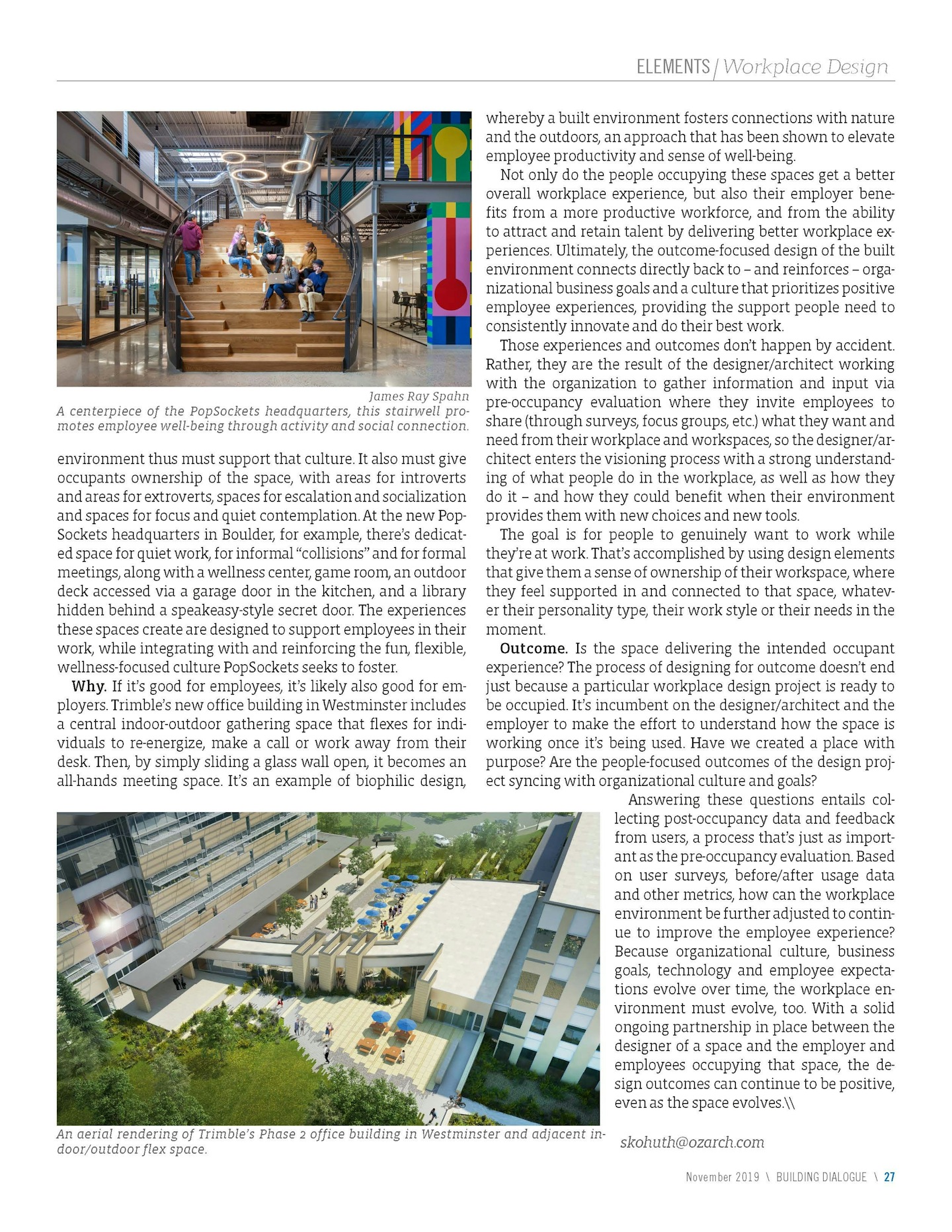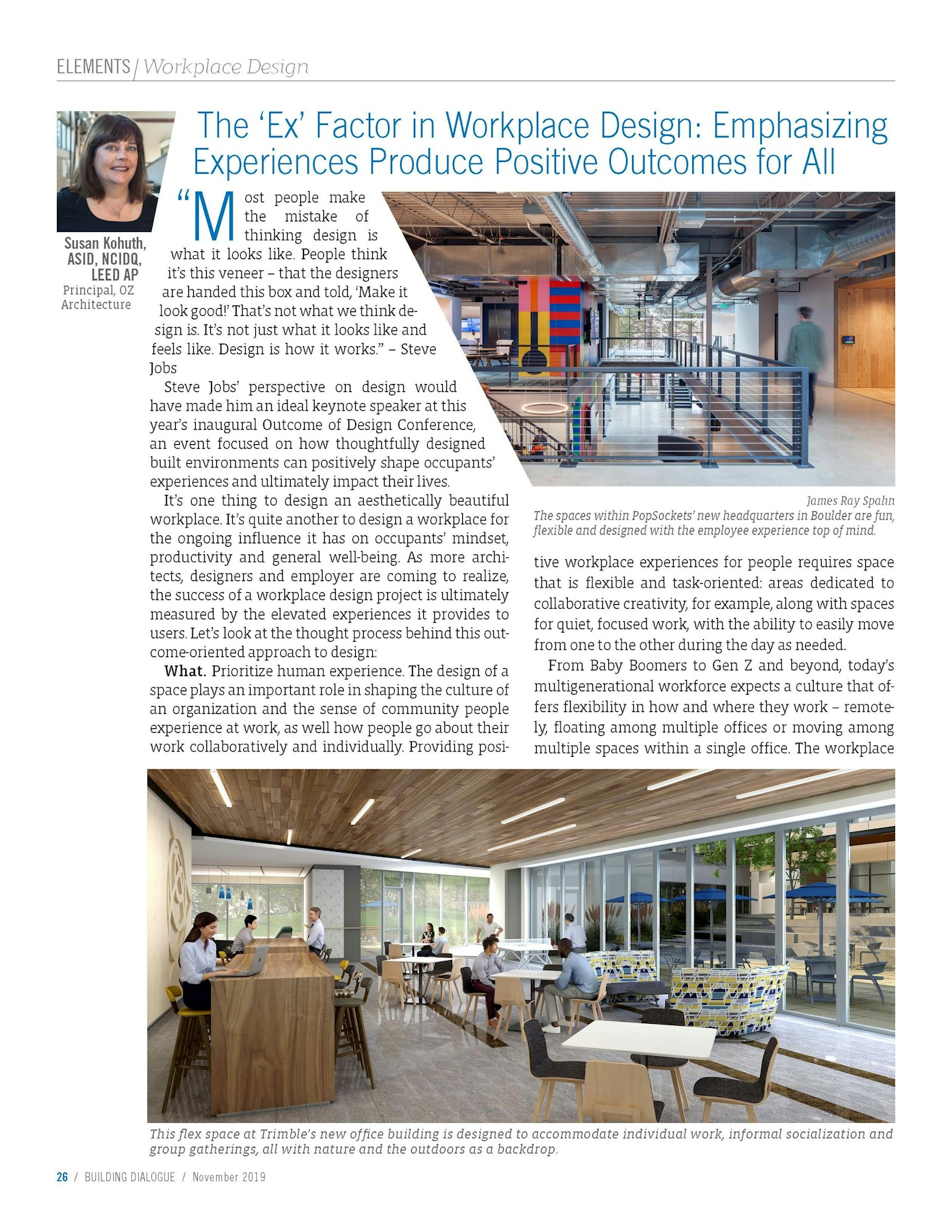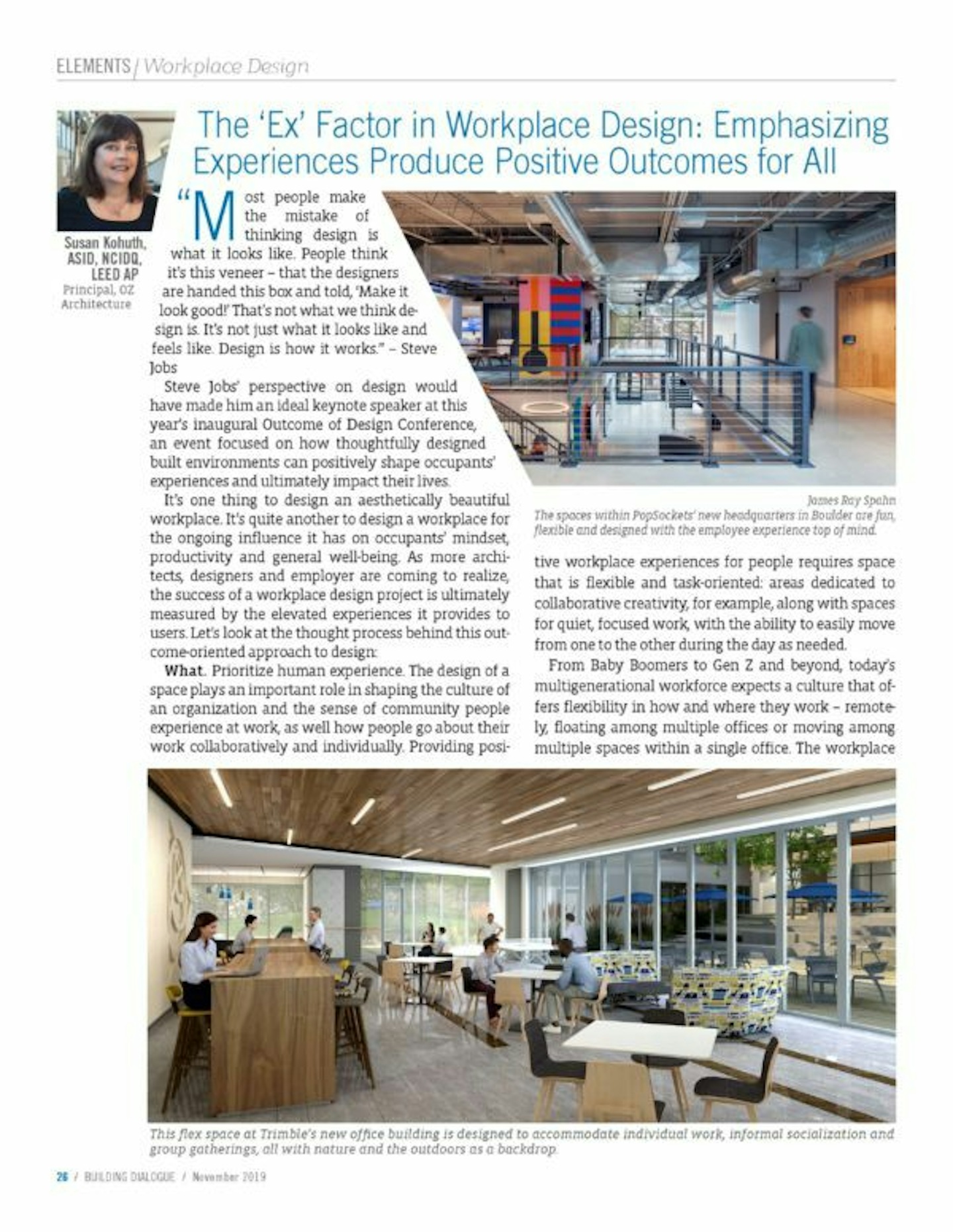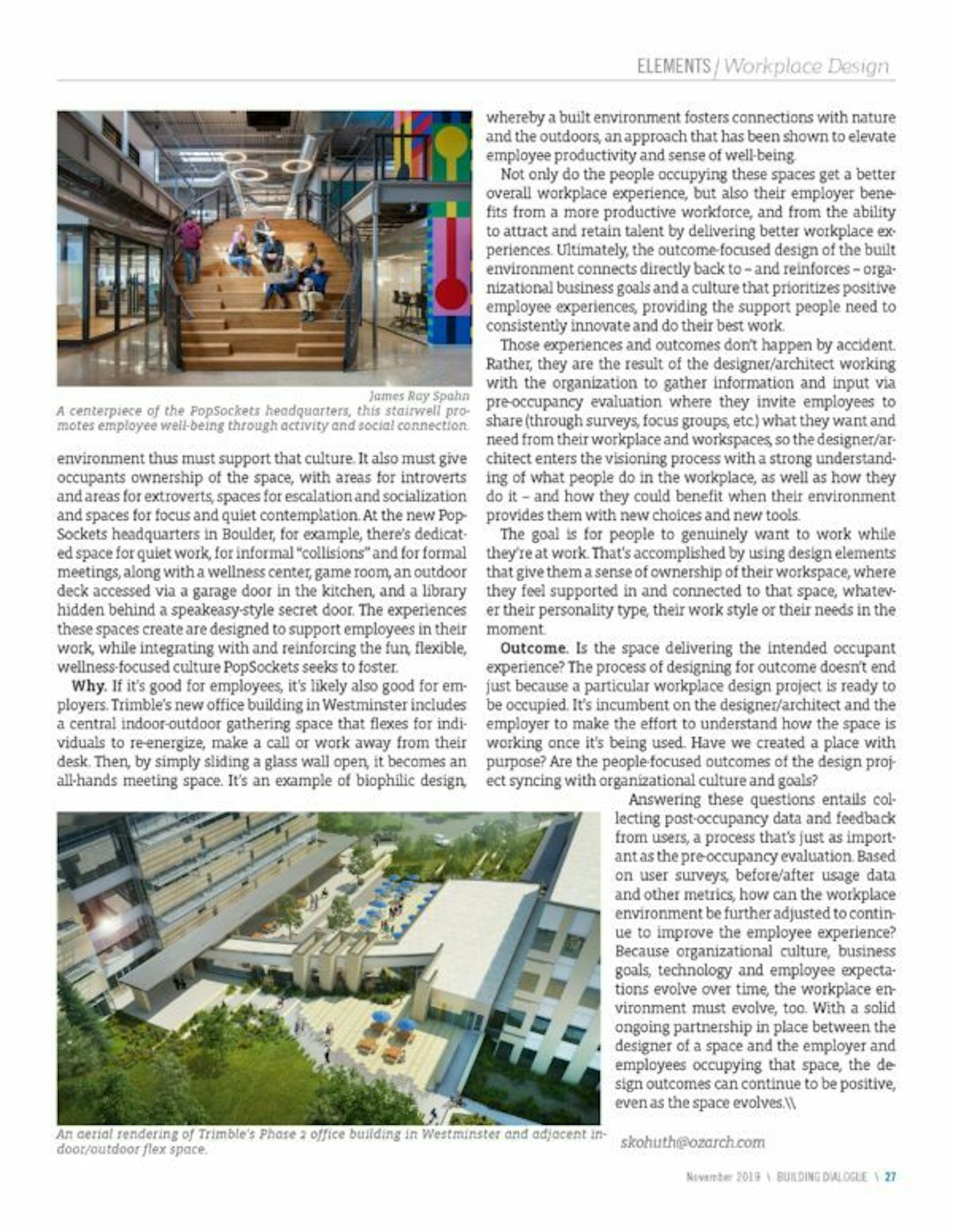The success of a workplace design project ultimately should be measured by the quality of experiences and outcomes it provides to the people who occupy the space, OZ Principal Susan Kohuth, ASID, NCIDQ, LEED AP, explains in an article she authored for the latest issue of Building Dialogue.
In the article (see the full version in the PDF below), Kohuth details how more architects, designers and employers are realizing that the design of a workplace — its spaces and the elements within those spaces — can have a major impact, positive or negative, on the mindset, productivity and general well-being of people who occupy those spaces. As a result, they are mindfully prioritizing the use of design elements that provide a positive human experience, and that promote the general physical and mental health well-being of building occupants.
In this case, what’s good for employees is also good for employers, because when people genuinely feel engaged with their workplace surroundings, they’re likelier to feel engaged with their work and with their employer. These kinds of positive outcomes not only help to foster and sustain a positive organizational culture, they go right back to the employer’s bottom line.
These positive outcomes don’t happen by accident, either, Kohuth says. Rather, they’re part of an ongoing process that relies heavily on feedback from employees, both pre-occupancy, to understand what people want in their workplace and workspaces, and post-occupancy, to understand how the space is working once it’s being used and how it could be further adjusted to continue to improve the employee experience.





